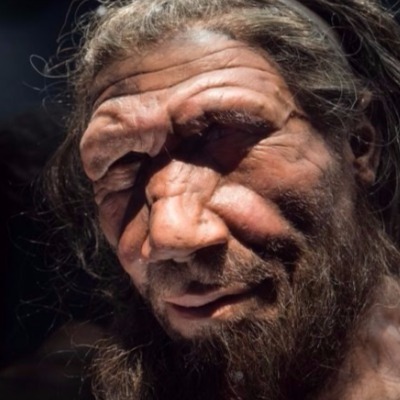The carbon cycle is the cycle biogeochemical traversed by the carbon molecules present on planet Earth. Throughout its cycle, carbon passes through the oceans, soil, atmosphere and living organisms.
carbon is the base element of all organic molecules and is available in greater quantity in the environment in the form of carbon dioxide (CO2), also called carbon dioxide.
In the carbon cycle, carbon dioxide is released into the atmosphere, absorbed by living beings and recycled by plants. This movement ensures the balance of the amount of carbon needed for life.
Currently, however, humans are shifting that balance, especially with the burning fossil fuels. This combustion releases into the atmosphere an amount of carbon that plants cannot absorb.
The excess of carbon dioxide in the atmosphere is intensifying the greenhouse effect, which causes global warming.
How does the carbon cycle happen?
The carbon cycle is the passage of carbon molecules through different structures present on planet Earth. These molecules pass through the oceans, the land surface, plants, living organisms, and the atmosphere.
Let's start to imagine this cycle by thinking about the carbon dioxide that is available in the atmosphere. This carbon dioxide will be absorbed by plants with the help of energy from the sun in a process called photosynthesis.
Organisms that do photosynthesis are called autotrophs. They use carbon to form glucose molecules, which will serve as energy for plant growth.
Autotrophic organisms are called producers in the carbon cycle. After fixing the carbon in your body, the producers carry out the cellular respiration.
In cellular respiration, glucose molecules are broken down and carbon dioxide is released back into nature.
Another possibility is that these organisms (producers) die. In this case, there will also be a release of carbon dioxide, now during the process of decomposition.
There is still a third possibility for these organisms, which is to serve as food for other living beings in the food chain.
Producers can serve as food for primary consumers (animals that feed on plants) or secondary consumers (animals that feed on plants and other animals).
Primary and secondary consumers will absorb carbon from producers and release it in the form of carbon dioxide during their breathing or in their decomposition, when they die.
Decomposition is the transformation of organic matter into inorganic matter. In this process, carbon is returned to the soil.
There is also another way to release carbon dioxide into the atmosphere, which may or may not be natural: a combustion. When organic compounds are burned, they normally release carbon dioxide.
This is the case for burning fossil fuels such as coal and oil. It is the excessive burning of these fuels that is causing the planet's temperature imbalances.
 Graphic representation of the carbon cycle.
Graphic representation of the carbon cycle.
understand more about photosynthesis and carbon dioxide.
Human actions and the imbalance in the carbon cycle
Most of the energy we produce comes from fossil fuels, such as oil and coal. Fossil fuels are the result of the decomposition of living organisms over thousands of years.
They have been accumulating inside the Earth's surface and have a high concentration of carbon.
The human being drills the surface to remove these fuels and produce energy. Energy is produced from burning this compound, a process that releases carbon dioxide into the atmosphere.
THE amount of carbon on Earth is fixed, this means that there is no increase in the amount of this element in nature.
However, by taking oil and coal from the ground and burning them, most of the carbon molecules that were stored on the surface are now released into the atmosphere.
As it is not a natural process, carbon in the atmosphere exceeds the amount that can be absorbed by plants and algae, resulting in a high concentration of carbon dioxide in the atmosphere.
know more about fossil fuel and mineral coal.
Carbon dioxide and the greenhouse effect
Carbon dioxide is one of the greenhouse gases, a natural and fundamental phenomenon for the maintenance of life on the planet. But when there is CO2 in excess, the greenhouse effect is intensified and the temperature of the planet rises, what we call global warming.
Here it is worth remembering that there are three ways of releasing carbon dioxide into the atmosphere and only one way of absorption or recycling. The release of carbon dioxide occurs through:
- Cellular respiration;
- Decomposition of living organisms;
- Combustion.
The absorption of this gas is done only by plants and algae in the photosynthesis process. This means that plants play a very important role in balancing the amount of carbon and there is another aggravating factor.
In recent decades, in addition to the growth of carbon emissions into the atmosphere, it has increased at alarming rates. logging of forests around the world.
Thus, in addition to an excessive amount of carbon, we have fewer photosynthetic organisms and, therefore, less capacity to absorb this element.
Carbon dioxide, along with other greenhouse gases, such as methane gas and nitrous oxide, cause the planet's average temperature to rise, which can have the following consequences:
- Melting of polar ice caps;
- Disappearance of coastal cities;
- Less amount of water on the planet;
- Imbalances in ecosystems;
- Less supply of natural resources.
Given this scenario, it is essential that countries seek clean energy sources, such as solar, wind and hydroelectric energy.
It is also important that these fonts are renewable. Fossil fuels took thousands of years to be produced and are not renewed at the same rate of use. That means this is a exhaustible energy source.
Understand more about the greenhouse effect and global warming, renewable energy and logging.



